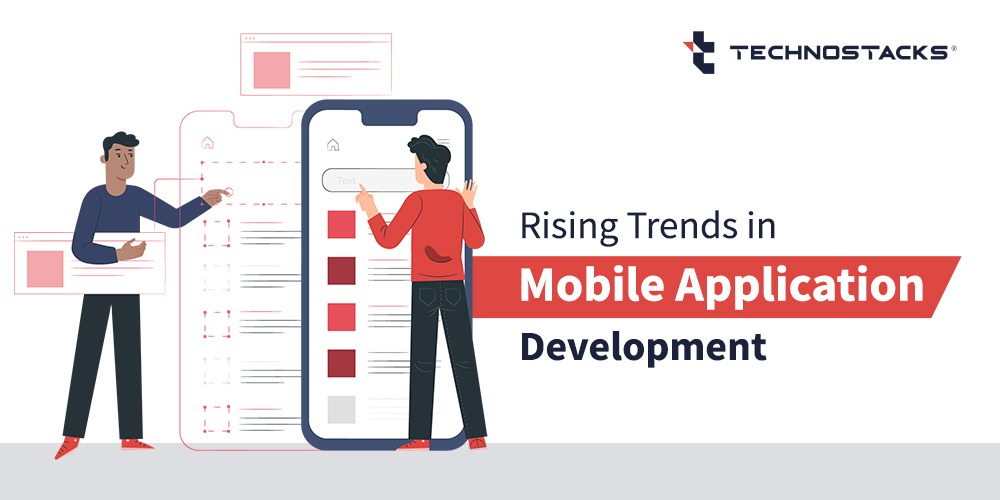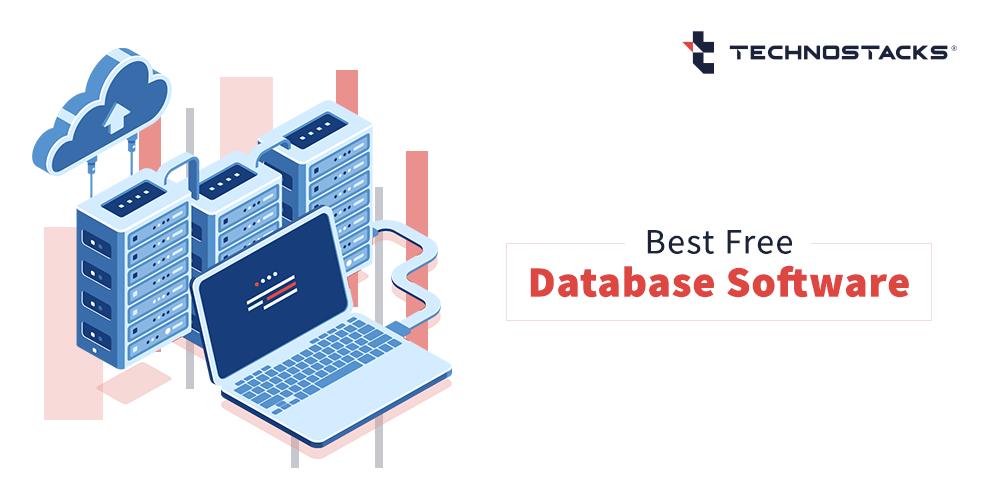Mobile App Development Trends to Look For in 2022
Having a mobile app is only the first step in planning and proposing your business services. It is essential to keep it up to date and reflect the new trends in mobile application development to enhance your business services through mobile apps.
Being a leading mobile app development company, our responsibility is to give answers to all your queries. Therefore, we have come up with this article, in which you will find the top mobile app development trends for 2022 and the most important ones to implement in your business operations.
Latest Mobile App Development Trends in 2022
- The 5G Technology
5G is the next model in mobile technology to replace 4G/LTE’s latest technology. Due to the change speed up to 100 GB/s, the aggregate is predicted to power up the IoT. Mobile app developers are required to count the expected rise in change speed and upscale their offerings completely.
According to statista, Forecast number of 5G subscriptions worldwide by 2025 will be 3bn.
The benefits that 5G technology can offer your app are more incredible speed to increase mobile app user retention, fast data transfer, lower latency, and excellent user experience.
As you get a sneak peek of 5G’s benefits for your app, this technology will be the revolution for mobile devices. Mobile app development can use this technology in different industries like AR/VR, Smart Cities, IoT, Supply Chain, and Transportation.
- Foldable devices
Foldable devices acknowledge the possible future of mobile app development as the user business chooses up despite the higher-than-average costs. The key thing about folding displays is their transformative capability: you can use it as a smartphone, and then, wherever desirable, you can unfold the show and receive a medium-size tablet.
Some models enable users to fold them in somewhat or out, making them denser. Brands that present foldable displays include Samsung’s industry giants, with their Galaxy Z Fold model, Huawei, Motorola, and LG.
The trend presents an opportunity for smartphone manufacturers and an uninspired and technological challenge for application developers. So, as the overall price tag for foldable devices grows more reasonable for most of the user-base, developers should focus on this particular trend and adapt their mobile apps to fit all types of display screens, also comprising folding displays.
- VUI
Voice User Interfaces (VUI) is getting more popular with assistants like Siri or Alexa and it is one of the rising trends in mobile application development. As people steadily get used to this interaction, they will be prone to use VUI in other applications.
According to the Adobe Voice Technology Study directed in July 2019, 85% use their voice to check mobile phones. In the same study, 94% of users claimed they wanted to use voice on more devices.
Even though not many people use voice interfaces for shopping, The research says voice shopping will grow from $2bln in 2018 to $40bln in 2022. It is an excellent opportunity for local businesses since 58% of US consumers use voice search to find local businesses.
On the other hand, there is yet a requirement to increase security concerns and teach clients. 79% of American respondents are confused by the privacy concerns associated with Voice User Interface.
- Biometric authentication
Biometric authentication in mobile development typically refers to identifying users by their fingerprints or through facial recognition. As the latest mobile app development trends, biometrics redefines users’ expectations of how security should function for mobile applications.
For example, apps like PayPal and Apple Pay use facial identification to recognize users and give an additional level of protection to their funds and data.
Whether you’re in retail, fintech, or healthcare, applying computer vision and other biometrics-processing technologies will enable your consumers to enjoy an additional level of protection to their data and money.
- Instant apps
An instant app can experiment and start the Android app without fixing it on the device. It may be an excellent opportunity for users to try a few apps and choose just one. In such a case, it is not required to have sufficient memory for it. The instant app’s idea is to provide the user with the experience behind the product without downloading it fully.
Due to instant apps, the emphasis put on creating a unique first experience may pay off. Building an app that won’t enchant the user at first glance will backfire.
- Mobile wallets
Mobile payments are an exciting trend not only from retailers’ and payments processors’ points of view. It is also about giving users convenience with getting payments by mobile devices. The levels of mobile payment adoption differ.
As per the prnewswire, Mobile Wallet Adoption Rate to Increase to 75 Percent by 2025.
Mobile wallets are an excellent opportunity for offline retailers who look for ways to keep the customers loyal and make their purchases more convenient.
The mobile wallet is not only about payments done offline – it may also be used for powering loyalty programs.
Starbucks app is one of the most significant models, being the most commonly used bond coupon app. The app enables users to collect and gather loyalty points and purchase coffee and pay on the go. - On-Demand Apps
On-demand mobile app development is trending and will be higher in 2022. Apps like Airbnb and Uber have given how strong apps in this place can be.
Different stakeholders are investing heavily every year with respect to on-demand services. These are some samples of how apps can change the on-demand business:
● Convenient laundry services
● Doctors on-demand
● Virtual tutors and coaches
● Home-based food delivery
● Online bookings of house cleaning
● Maintenance services
● Fitness on-demand
● Pet care
● Barber and beauty salonThe opportunities for on-demand apps are seemingly endless. As a mobile app reseller, this is a massive opportunity for you to widen your customer base. By leveraging on-demand skills, your customers can add superior functionality to their apps, which will improve profits for everyone.
- Artificial intelligence and Machine Learning
Automated face identification to analyze portrait-making is no more a feature – it has become a standard. Automatic filters and funny stickers were one of Snapchat’s expert drivers. As machines can identify images and process the natural language (with greater or lesser success), AI-powered specializations in apps will develop.
AI applications differ depending on the context. It may be a speech recognition feature, smart filters implemented in the camera, or even an automatic assistant setting up the camera before taking a shot. Apple’s Siri and Google Assistant are amongst the most-known examples of AI-powered mobile apps, but the chances for applying AI in custom mobile app development are infinite.
It is possible to use the smartphone to analyze a working industrial machine’s sound to spot the signs of approaching failure – sometimes the machine’s sound changes only lightly, in the way the human ear cannot stain, but the device is. It’s not a wonder that AI lives in one of the hottest mobile app development trends.
- Blockchain and decentralized apps
Blockchain technology is most famous for powering cryptocurrencies, with bitcoin holding the most renowned one. The main idea is to build a decentralized database.
Blockchain technology may be used in acquiring payments or access to the network by creating the tokens used in the authentication. With the decentralization of the database, no one would change the database records to gain illegal access. The technology is usually seen only in a cryptocurrency connection, but it is changing with tech giants’ interest.
- IoT and connectivity
The Internet of Things is a new word and old technology. The idea of associated machines transferring information to support effectively was seen in the creation and heavy machinery. Still, recently the technology came into the customer market with smartwatches, smartphones, smart home devices, and smart fridges. The IoT market is set to be deserving of up to $1,319.08 Billion by 2026.
Merging the Internet of Things with smartphones makes it possible to provide advanced tools to control their machinery. Smartphones and apps are currently the intelligent centers of intelligent devices to be in the nearest future.
Moreover, many new mobile devices will force the cross-platform mobile development paradigm in many software development agencies. To build an app running on both a smartwatch and a mobile phone, in the same way, is not a part of the cake.
- AR and VR
As per the statista, the global augmented reality (AR) and virtual reality (VR) market is forecast to reach 30.7 billion U.S. dollars in 2021, rising to close to 300 billion U.S. dollars by 2024. These technologies will become excellent and part of the great turn in raising gaming and entertainment mobile apps.So, the VR and AR technologies in mobile app development continuously increase production and innovation quickly. Both technologies will assuredly change the way developers create gaming apps, driving apps, and live-streaming apps in the future.
- Beacons
Bluetooth-powered beacons are not new technology itself, but they increase attention, as they enable the connection between the online and offline worlds. Beacons are utilized in Leroy-Merlin mobile application to comprehend user-base conducts in offline stores. Knowing the patterns of their movement, the retailer can optimize the placement and merchandise.
And that is only one of the practical applications in the bespoke mobile app development alerts setting. According to Grand-view research, the Bluetooth beacon business will be worth $58.7 billion by 2025, with an expected Compound Annual Growth Rate of 95.3%.
- Chatbots on the rise
Although new chatbots are far from living perfectly, they are now famous. By processing the natural language, they automate many slow and repetitive actions like answering users’ most popular questions (“is the store open today?”) or automating the ordering process.
According to the new survey, 36% of Americans declare to have used a chatbot to interact with the company in 2019. With Facebook Messenger’s reputation, using chatbots on mobile is rising, as Messenger is usually used as a standalone app used by more than 1.82 billion people.
- Omnichannel and cross-platform
With several channels fighting for the user and at least two mobile standards, with consumers switching between, it is essential to provide the best exposure possible in all of them.
According to MarketingSherpa, today’s customer uses up to six touch points with a brand, with approximately 50% always using more than four. That begins with unifying the experiences to keep unity – no matter the device or channel.
That is why responsive web apps that work within the browser are as efficient as native ones are on the rise. Companies are looking for easy-deployable tools to build omnichannel resolutions. React Native framework is one of the leaders, with the capacity to share and reuse up to 70% of code among platforms.
- M-commerce
M-commerce is purchasing and selling products and services via mobile devices. Until recently, it occurred mainly through mobile web pages. However, it is more and more common to shop in applications.
According to Business Insider, the number of m-commerce solutions will reach USD 488.0 billion, or 44 percent of overall online business, in the year 2024. Furthermore, 85 percent of users would decide on native applications right over mobile-based web stores.
So, if you can’t change your decision-maker to finance in a native mobile app, let them understand; it’s where the money is.
Interestingly, since smartphones developed and became more convenient, consumers prefer to purchase them somewhat from tablets. The latter will be liable for less than 19% of sales. M-commerce is also a great place to connect the power of all the other trends you find in this article.
- Cloud-based applications
Cloud-based mobile applications use cloud computing technology alternatively of the device’s hardware. The operating system no longer restricts you. It may be more comfortable to create a cross-platform application this way. Your mobile device does not need to devote too much production, thanks to cloud storage and processing abilities.
Everything is stored and treated in the cloud. The profits are much more fluid UX, e.g., you can charge devices and transfer all data and settings right away. Cloud-based applications have added advantages too.
It is security.
Cloud services typically have better protections than private mobile devices. Also, it is simpler to make a cross-platform application this way.
To get entire assistance from cloud-based applications, enhanced connectivity is needed. However, with the spread of 5G Internet, cloud-based mobile applications will outclass predictable applications.
- Wearables
The demand for wearable devices will rise, which indicates that there will also be an increasing market for mobile apps combined with these devices.
Wearable technology offers enormous opportunities, especially for the sports and healthcare industries. Measuring and analyzing vital signs in real-time attracts intelligent wearable devices: watches, bracelets, and even jewelry.
This is where Machine Learning will also get into play – from offering forecasts and recommendations based on health pointers to even catching illnesses in the beginning stages.
- Virtual events streaming
Formerly the pandemic crisis, taking an online Zumba class had been a sluggish distinctiveness. Still, when event streaming is at the head of the latest trends in mobile app development, the same is a new kind of reason.
The last year has given a massive boost to platforms like ConnexMe, Hopin, Glisser, Events, fairs, SpotMe, and many others. Conference apps like Zoom and Jitsi have also grown in reputation, likely to move into 2022.
- Going Global
Global outsourcing for mobile application development will also increase in the coming years, determined almost by weaker production costs, increased service quality, and timely services offered by offshore businesses.
There is certainty that several have joked the renowned proverb that ‘What you pay for is really what you receive at the end,’ implying that lesser investment than needed in application development could only result in deprived value. However, the constantly simple knowledge is that South American and Eastern European mobile developers can provide quality work, with various showcasing their top-notch skills on GitHub.
Survey of Current Trends in Mobile App Development
The above list of 2022 app trends shows that new mobile technologies constantly question the old way of doing business. Mobile devices change the way we do shopping, pay bills, or search for data. With better mobile applications and more effective technologies, people will be more satisfied with new solutions and opportunities. Only those who adopt the change will win and develop their businesses.
Key Takeaways
Technologies are changing every time and it affects human lives. Above mentioned all the mobile app development trends boost the mobile sector with ease. It’s important to be aware of the current app development trends before developing an app for your business.
Here we have tried to solve some of your questions for “What are the top mobile app development trends in 2022?”. If you have any query or have any suggestions then you can comment below or contact us. Your feedback will be highly appreciated!








